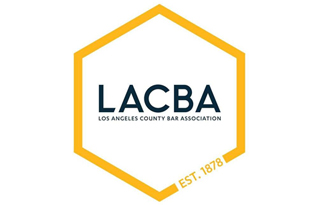This article, co-authored with Heather Morse, was originally published by the Greater Chicago Chapter of the Association of Legal Administrator’s magazine.
While Heather and my initial research and conversations regarding the generational divide in law firms dealt with lawyers and their clients, this article focuses on how law firms manage the different generations, recruit and retail lawyers, and continue to build vibrant practices.
Justin is a mid-level, corporate Associate with a high, six-figure book of business. His entrepreneurial spirit and his family’s prominence within the business community have largely contributed to his success and his ability to introduce new clients to his firm. Justin’s early achievements have also fueled a strong sense of self.
During his annual performance review, Justin suggested to his department chair, Sally, that, based on his rainmaking ability, he be promoted to the status of Equity Partner. Surprised by his request, and despite the fact that Justin has good legal acumen and tremendous business development abilities, Sally suggested that Justin “wait his turn” to become Partner, an opportunity that was minimally four-to-five years away.
A month later, Justin resigned and walked across the street to a competing firm where he was hired as an Equity Partner. Today, Justin has a growing, seven-figure book of business.
Was Sally naive for undervaluing Justin’s contributions or were Justin’s demands premature given his experience?
For the first time in history, there are four generations in the workforce—Silent, Boomer, GenX and GenY. The different mentalities, preferences, and motivations among the generations has introduced some unchartered opportunities and challenges.
Savvy legal administrators who understand the different generational markers and who customize their responses accordingly will benefit from a harmonious and successful working environment. A lack of generational understanding results in internal strife, increased turnover and loss of business.
The Four Generations
Generational behavior can be largely attributed to specific, conditioning events.
Silent Generation professionals, born between 1925 and 1945, were generally influenced by war and depression, which is why in the workplace they are risk averse, need to be in control and are slow to innovate.
Boomers, born between 1946 and 1964, are the most idealistic of the generations due to post-WWII prosperity and idealism. Raised in a lock-step work environment where they earned a higher status and increased compensation by “putting in their time,” these professionals tend to live for today, see little value in planning for the future and are hesitant to collaborate.
GenX, born between 1965 and 1984, are the most entrepreneurial of the generations as a result of being latchkey kids who, from a young age, were conditioned to fend for themselves. Independent and risk tolerant, these professionals seek recognition and reward today for the value they provide; delayed recognition or an absence of it drives them to look elsewhere for new opportunities and fulfillment.
GenY or Millennials, born between 1985 and 2000, grew up in the Internet era. Technology plays a critical role in everything they do. It is no wonder they desire real-time validation and feedback, and prefer collaboration over working independently. This generation works to live, and they are not willing to compromise their lifestyle for the promise of a corner office.
As legal administrators, you have the role of bridging the gap between the generations to ensure each is appropriately leveraged. Below are some recommendations to aid you in successfully navigating—and guiding others to navigate—the generational divide.
Recommendations to Boomers When Working with GenX and GenY
Do not necessarily equate “out-of-the-office” with “off the clock.” One way your generation demonstrated devotion and loyalty to the firm and to client work was by arriving to the office early and leaving late. Instead of burning the candle at both ends by physically being in the office, GenX/Y utilize technology to stay connected. Although their physical work day may end at 6:00 p.m. to go to the gym or to spend time tending to their young, GenX/Y will often work, albeit remotely, late into the evening to ensure their work is completed. To engage GenX/Y, identify ways to incorporate telecommuting, flex time and work/life balance.
Due to their entrepreneurial spirit, GenX/Y will often “run” with an assignment without the thought of “checking in” to update you on the status of the matter. Your initial inclination may be to perceive such behavior as presumptuous or disrespectful, when in fact GenX/Y have assumed you trust and have empowered them to handle the matter. If you desire regular updates, be sure to specifically communicate that requirement at the outset of any assignment.
GenX/Y also have a need to be recognized and feel valued as a member of the team. By simply identifying opportunities for increased client interaction—include them in client meetings, new business pitches, and matter-closing dinners – you will successfully engage them and satisfy their latent needs. Suggest to clients that they also include younger members of their team at these events. Doing so will provide mentorship to younger professionals; it will also further solidly your client relationship vis-à-vis multiple points of contact.
Provide business and leadership development coaching and training programs to ensure GenX/Y professionals have the skills to lead within the firm and participate outside the firm in developing business. Ask them to co-chair a department, serve on a committee or join a networking group. Doing so will communicate and demonstrate the firm’s willingness to invest in them and their future.
Finally, provide real-time feedback and mentorship—as opposed to doing so once a year in the form of a review.
Recommendations to GenX/Y When Working with Boomers
Understand that Boomers value facetime over communicating via technology. Although you may perceive it to be more time consuming or less efficient, make a point to drop by a Boomer’s office or pick up the phone as opposed to sending an email or text message. Over communicate to demonstrate to the Boomer that you are engaged and on top of a matter.
When transitioning clients and pitching prospects, offer to take the lead in preparing for and facilitating meetings and interactions. Recognize the Boomer as a “seasoned veteran,” who can provide big picture context and counsel, while you handle the day-to-day activities. Although the Boomer may not be the regular contact, they need to feel valued and relevant. Also, understand that “transition” issues are highly emotional for Boomers, so do not expect them to always see your or the firm’s position when it comes to client succession planning.
Remember, patience is not one of your best characteristics. However, patience is what is needed as Boomers retire and business is transitioned. What Boomers want most is to know that their legacy will continue once they retire. By respecting their work and their work ethic, you can ease the pathway to transition.
Recruiting and Retaining GenX and GenY
A challenge for all firms is laterally attracting and retaining both GenX Partners and GenY Associates. Unlike prior generations, neither GenX nor GenY are willing to work within your firm’s current constructs. GenX, the byproduct of divorce, is unwilling to place their families second. GenY expects to find purpose in the work they do. Both of these concepts, especially within the context of work life, are foreign to Boomers. Also, GenX/Y are willing to be paid less, and in some cases forego Partnership track, to achieve the balance that they desire.
Finding a bridge that connects all three generations together is a challenge, but it is doable. Creating a formal succession plan for Boomer Partners will provide a pathway for GenX/Y to develop their own relationships to continue the attorney-client relationship when senior attorneys retire.
Providing GenX with a pathway to leadership through committees, practice groups, client teams, and, yes, the firm’s executive committee, will keep them engaged and loyal to the firm.
By recognizing GenY’s need to find purpose at work will provide numerous opportunities for the firm to engage not only with the local community, but with the world. In its simplest form, purpose can mean an Associate’s understanding of how and why their research on a case matters to the client. In a more global sense, working on pro bono matters, or being given out-of-the-office time to donate to their preferred charity is critical.
While GenX might have introduced the concept of a “work-life balance,” GenY has taken it one step further—they work to live. And technology allows them to do so, from anywhere in the world.
Meeting their technology needs will go far in engaging them within the firm’s culture.
GenY is a generation that wants to be at the top of the food chain, today. Similar to Justin, do not be alarmed when they start to originate clients despite their lack of legal tenure. They understand they have a lot to learn, which is why they are open to frequent feedback and training opportunities.
In the words of British novelist George Orwell, “Each generation imagines itself to be more intelligent than the one that was before it and wiser than the one that comes after it.”
Whether it is professionals, like Justin, who some may perceive as “overly ambitious,” or senior professionals who are “hoarding” work and leadership roles due to delayed retirement, the generational divide requires us to look at the way we do business through different lenses and evolve our approach to ensure our professionals are leveraged for their highest and best use.

















